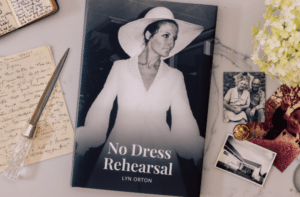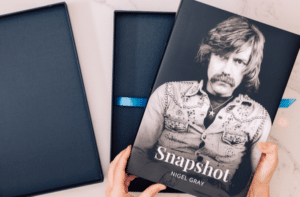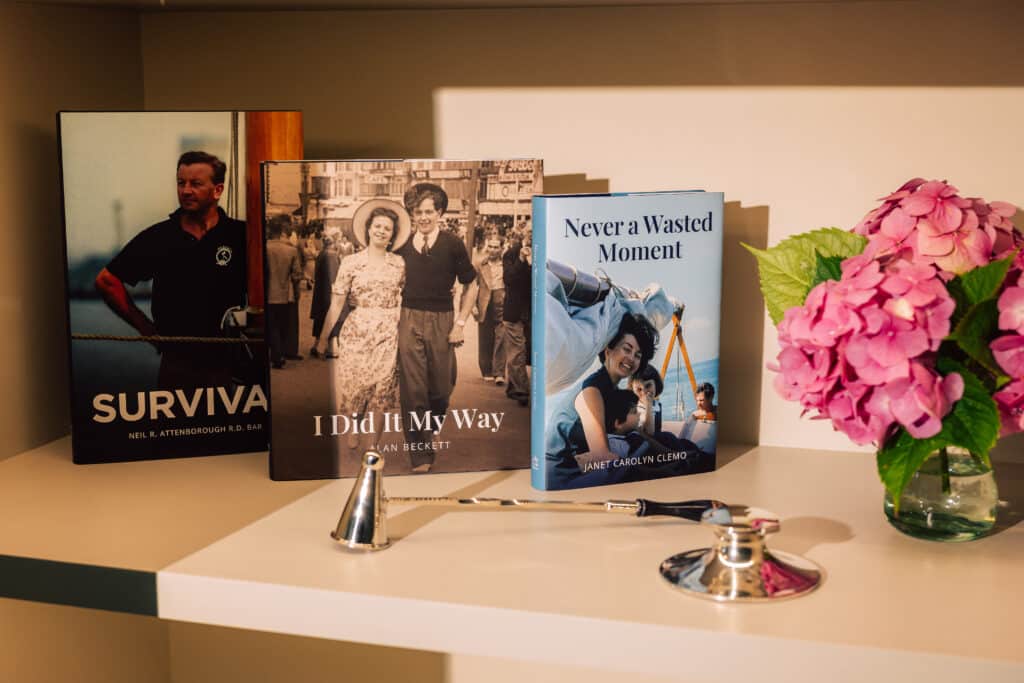Many of our authors come to LifeBook Memoirs with a firm idea of what they want to say and how they want to say it.
With the help of our expert team of interviewers, ghostwriters, and editors, the author’s story is voiced precisely as they desire, after which the author selects the photographs they feel will best complement their words.
However, toward the very end of their projects, some authors suddenly hit a blank—just what should they call their story? People who’ve had no issue with producing tens of thousands of words can find themselves flummoxed by the challenge of summarizing their life in the few words needed for a book title.
The title is the first thing your readers will see when they pick up your book, and although you cannot tell your whole story in so few words, you can certainly give a pointer as to what the contents say about you.
When first impressions matter: Titles
A good book title should be:
- Informative. Titles earn their place by providing as much information as possible in the limited space available.
- Attention-grabbing. A bland, vague title can cause some to disregard a book even before they pick it up.
- Simple and memorable. If a title is too complicated or a tongue-twister, people might shy away from your book.
When one title just isn’t enough: Subtitles
Readers absorb book titles quickly. Adding a good subtitle will only reinforce your message. For example, The Lessons of My Life could be enhanced with a subtitle such as A Lifetime of Chaos and Order as a Primary School Teacher. Pounding the Streets might benefit from a subtitle like One Man’s Journey Through Marathons, Milestones, and Blisters. Likewise, Best Foot Forward could carry a subtitle such as A Shoemaker’s Tale of Craftsmanship, Family, and Walking Tall. Such additions allow you space to expand on your title’s message, offering a few extra words to clarify, contextualize, or add a touch of intrigue or personality to encourage a deeper look inside.
The LifeBook Memoirs team can help you with suggestions and refinements of potential titles and subtitles. You can always seek the help of our experts—we have produced thousands of wonderful books and are only too happy to help you decide on your unique title.
When inspiration strikes: Working titles
You may have an idea for your title even before your interviews get started. For some, it’s the title that shows up first, before the desire to write an autobiography—a lightning bolt of brilliance, uninvited, dramatic, impossible to ignore, and demanding a story to go with it!
If that flash of inspiration is yet to arrive, you can always opt for a working title that serves as a useful reference point as your project develops. It could be anything from the bland to the dramatic; you can change it any number of times before your book goes to print.
From the playful to the personal: Title inspiration
Are you known by a particular nickname? If your name is Richard Brown, say, might you be known by friends and family as “Dick”? If so, an autobiography titled The Life and Times of Tricky Dicky or The Tales of Clever Dick will certainly tempt readers into the book more than a simple Richard Brown or My Life and Times.
The title you give your book can do a lot of heavy lifting in expressing the main thrust or focus of your story. It could be an expression of your major or notable achievements, for instance, or a strong personal emotion. Alternatively, it could reference a special relationship or something witty or amusing.
Here are a few ideas that might help (some with links to LifeBook Memoirs autobiographies).
An expression of your life:
- A Scots Nurse’s Story
- A Life on the Road
- A Family Affair
- From War Baby to Delivering Babies
A major achievement:
- Credit Where It’s Due
- The Fruits of My Labour
- An American Abroad
- Surviving the Blitz
A strong personal emotion:
- Remember, We Trust You
- Live Well, Laugh Often, Love Much
- A Lucky Life
- Made by My Family
A special relationship:
- Looking Back With Love
- Dancing with the Doctor
- The Life We Created
- Eighty Years as a Family Guy
Something witty or humorous:
- I Should Have Been Born Twice
- My First 96 Years
- You Only Live Once
- Least Likely to Succeed
Judging your book by its cover: Your dust-jacket photo
You’ve heard it before: “a picture is worth a thousand words.” When it comes to your book cover, it might be worth even more.
The perfect cover photo for your book will tell your readers far more about you than any number of words—however well-written—can. But how do you pick one cover picture from your collection of hundreds or maybe thousands of photographs?

If, as with private autobiography authors, your cover picture is to be of you, look for a photograph that really captures your personality—a snap in which you are smiling or laughing or doing something you love, or pick an old photo that evokes emotions of happiness or nostalgia.
Like most books, LifeBooks are formatted in portrait rather than landscape orientation, so most people’s natural inclination is to choose a picture that fits this shape. However, if you have a great landscape picture that would be perfect for your story, our outstanding designers will use their creative talents to create a cover that best shows this off, perhaps by incorporating other elements or wrapping the picture around the entire dust jacket.

Of course, design is only part of the equation—your chosen image also needs to be up to the task in terms of quality. Inside your book, you can sometimes get away with lower-resolution pictures if they tell an important story, but for your cover, the image needs to be high quality. Generally, this means the resolution should be at least 600 dots per inch. If you wish to use an old printed photograph, that is usually no issue, as your interviewer will be able to scan this appropriately, but some digital photographs can be too low-resolution or small to make a good cover picture. Our team will advise you if this is the case with any images you like.
When you can’t see the title for the words: Asking for help
When you sit down to choose the title and cover image for your private autobiography or memoir, it might be the only time in your life that you do so. With that thought in mind, it’s important to make the right decisions. So, look around you for inspiration. Rummage through your bookshelves to see which covers appeal to you and don’t be afraid to borrow ideas from others.
The important thing to remember, when you work with LifeBook Memoirs to tell your life story, is that you are never on your own—we will help and guide you every step of the way. We care as much as you do about getting every detail right so that your story shines, beautifully told, from cover to cover.
In good company: Thousands of autobiographies to explore
If you’re looking for more inspiration, the Library of Congress holds one of the largest collections of published works in the world, with thousands of autobiographies from every walk of life listed.
And you can read about some of the many satisfied LifeBook Memoirs authors talking about their journeys into print by clicking here.
Written by Stephen Pitts, LifeBook Memoirs editor





